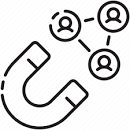Designing Innovative Industrial Gas Business Solutions
In the ever-evolving landscape of industrial gas, innovation is not just a buzzword; it’s a necessity. Companies must continuously adapt to meet the demands of their customers while also addressing environmental concerns and operational efficiencies.
Here, we explore various creative approaches to designing innovative industrial gas business solutions through five distinct methods: flipping it backward, turning it upside down, opposing it, putting it in a box, and reducing the number of pieces.
A. Flip It Backward – 10 Examples
Flipping an idea backward involves rethinking the traditional approach to industrial gas solutions. Here are ten examples:
1. Customer-Centric Supply Chains: Instead of focusing on production first, prioritize customer needs and tailor supply chains accordingly.
2. Reverse Logistics: Implement systems for reclaiming unused gases or byproducts from customers to reduce waste.
3. Backward Integration: Acquire suppliers of raw materials to gain better control over quality and costs.
4. Decommissioning Services: Offer services for safely decommissioning old gas systems instead of just selling new ones.
5. End-of-Life Solutions: Develop programs that help customers recycle or repurpose gas containers and equipment.
6. Feedback Loops: Create mechanisms for continuous customer feedback that inform product development.
7. Predictive Maintenance: Use data analytics to anticipate equipment failures before they occur, rather than reacting post-failure.
8. Sustainability Reporting: Provide backward-looking reports on sustainability metrics to enhance transparency with stakeholders.
9. Training Programs: Flip the training model by providing virtual reality simulations for safety training instead of traditional classroom settings.
10. Collaborative Innovation: Partner with customers in co-creating new products based on their specific challenges.
B. Turn It Upside Down – 10 Examples
Turning ideas upside down means challenging assumptions and exploring unconventional methods:
1. Gas-as-a-Service (GaaS): Instead of selling gases outright, offer subscription-based models where customers pay for usage.
2. Decentralized Production: Shift from centralized production facilities to smaller, localized plants that reduce transportation costs and emissions.
3. Focus on Byproducts: Instead of only selling primary gases, develop markets for byproducts that can be valuable in other industries.
4. Open Innovation Platforms: Create platforms where external innovators can contribute ideas or technologies related to industrial gases.
5. Crowdsourced Solutions: Engage customers in crowdsourcing initiatives to solve common industry problems collaboratively.
6. Virtual Consultations: Offer remote consulting services using augmented reality tools for real-time troubleshooting and support.
7. Dynamic Pricing Models: Implement pricing strategies that fluctuate based on demand rather than fixed pricing structures.
8. Integrated Energy Solutions: Combine gas supply with renewable energy solutions to provide comprehensive energy packages.
9. Gamification of Safety Training: Use gamification techniques in safety training programs to enhance engagement and retention among employees.
10. Carbon Capture Partnerships: Collaborate with companies focused on carbon capture technology to create synergies in reducing emissions.
C. Oppose It – 10 Examples
Opposing conventional wisdom can lead to groundbreaking innovations:
1. Ditching Traditional Cylinders: Move away from heavy steel cylinders towards lightweight composite materials that are easier to handle and transport.
2. Eliminating Middlemen: Directly connect producers with end-users through digital platforms, cutting out distributors entirely.
3. Rejecting Fixed Contracts: Offer flexible contracts that allow customers to adjust their gas needs without penalties as market conditions change.
4. No-Emission Goals: Set ambitious targets for zero emissions instead of merely reducing them incrementally over time.
5. Abandoning Standardization: Embrace customization over standard products, allowing clients to tailor solutions specifically for their operations.
6. Disregarding Traditional Marketing Channels: Focus marketing efforts on digital platforms rather than traditional advertising methods like print or TV ads.
7. Forgetting About Profit Margins First: Prioritize customer satisfaction and long-term relationships over immediate profit margins in business decisions.
8. Ignoring Industry Norms in Safety Protocols: Challenge existing safety protocols by adopting more innovative technologies like AI-driven monitoring systems instead of relying solely on human oversight.
9. Moving Away from Fossil Fuels Completely: Invest heavily in alternative energy sources rather than continuing reliance on fossil fuels for production processes.
10. Disregarding Historical Data Trends: Embrace predictive analytics that focus on future trends rather than solely relying on historical data.
D. Put It In a Box – 10 Examples
Putting ideas “in a box” refers to creating structured frameworks or models:
1. Business Model Canvas for Gas Solutions: Utilize the Business Model Canvas framework specifically tailored for industrial gas businesses to visualize value propositions and customer segments clearly.
2. SWOT Analysis Frameworks: Regularly conduct SWOT analyses (Strengths, Weaknesses, Opportunities, Threats) focused specifically on emerging technologies in the gas sector.
3. Innovation Labs Boxed Approach: Establish dedicated innovation labs within organizations where teams can experiment with new ideas without bureaucratic constraints.
4. Customer Journey Mapping Templates: Create standardized templates for mapping customer journeys specific to industrial gas applications, identifying pain points along the way.
5. Risk Assessment Checklists: Develop comprehensive checklists for assessing risks associated with new projects or technologies before implementation begins.
6. Regulatory Compliance Frameworks: Design frameworks that simplify compliance with local regulations regarding industrial gases while ensuring safety standards are met consistently across operations.
7. Performance Metrics Dashboard Boxes: Implement dashboards that track key performance indicators (KPIs) relevant specifically to industrial gas operations, allowing quick assessments of performance against goals set forth by management teams regularly throughout the year ahead!
8.. *Training Modules Boxed Approach* : Create modular training programs focused on specific skills needed within different areas such as safety protocols or equipment handling procedures tailored directly towards employees working within this industry sector!
9.. *Project Management Templates* : Develop standardized project management templates designed explicitly around launching new products/services related directly back towards improving efficiency levels across all aspects involved throughout each stage involved during development phases leading up until final launch dates arrive!
10.. *Collaboration Frameworks* : Establish clear collaboration frameworks outlining roles/responsibilities between various departments involved when working together towards achieving common objectives set forth by leadership teams overseeing overall strategic direction taken moving forward!
E Reduce The Number Of Pieces – 10 Examples
Reducing complexity often leads to more efficient processes:
1.. *Streamlined Product Lines* : Focus on fewer core products while phasing out less popular offerings based upon market research findings indicating declining demand patterns observed recently!
2.. *Simplified Supply Chains* : Consolidate suppliers into fewer partnerships which allows greater negotiation power when sourcing materials needed during production cycles!
3.. *Unified Customer Support Systems* : Merge multiple support channels into one centralized system providing seamless assistance regardless if inquiries come via phone/email/chat options available today!
4.. *Integrated Software Platforms* : Adopt integrated software solutions combining various functions (e.g., CRM/ERP) into single platforms reducing redundancies present previously across different systems utilized separately before now!
5.. *Standardized Safety Protocols* : Develop uniform safety protocols applicable across all facilities ensuring consistency maintained throughout operations regardless location-specific variations encountered previously experienced before implementing these changes made today!
6.. *Consolidated Training Programs* : Create comprehensive training programs covering multiple topics at once instead of offering separate sessions leading towards improved retention rates among employees participating actively during these sessions held regularly throughout year ahead!
7.. *Centralized Inventory Management Systems* : Implement centralized inventory management systems tracking stock levels across all locations enabling better forecasting capabilities reducing excess inventory held unnecessarily leading towards cost savings achieved overall!
8.. *Unified Marketing Strategies* : Develop cohesive marketing strategies targeting specific audiences instead of fragmented campaigns resulting from lack coordination efforts seen historically prior implementing these changes made today!
9.. *Integrated Reporting Tools* : Utilize integrated reporting tools providing real-time insights into performance metrics allowing quicker decision-making processes occurring regularly throughout organization’s operations moving forward into future years ahead!
10.. *Collaborative Workspaces* : Design collaborative workspaces encouraging cross-departmental collaboration fostering innovation while minimizing barriers preventing effective communication occurring naturally between teams working together towards achieving common goals set forth by leadership teams overseeing overall strategic direction taken moving forward!
Conclusion
In conclusion, designing innovative industrial gas business solutions requires a multifaceted approach that embraces creativity and challenges conventional thinking while also simplifying processes where possible!
By flipping ideas backward, turning them upside down, opposing traditional norms, putting them into structured boxes, and reducing complexity through streamlined practices—companies can position themselves at the forefront of this dynamic industry!
If you’re looking to get started on your journey toward innovation within your organization’s operations related directly back towards improving efficiency levels across all aspects involved—consider exploring these strategies further today!





